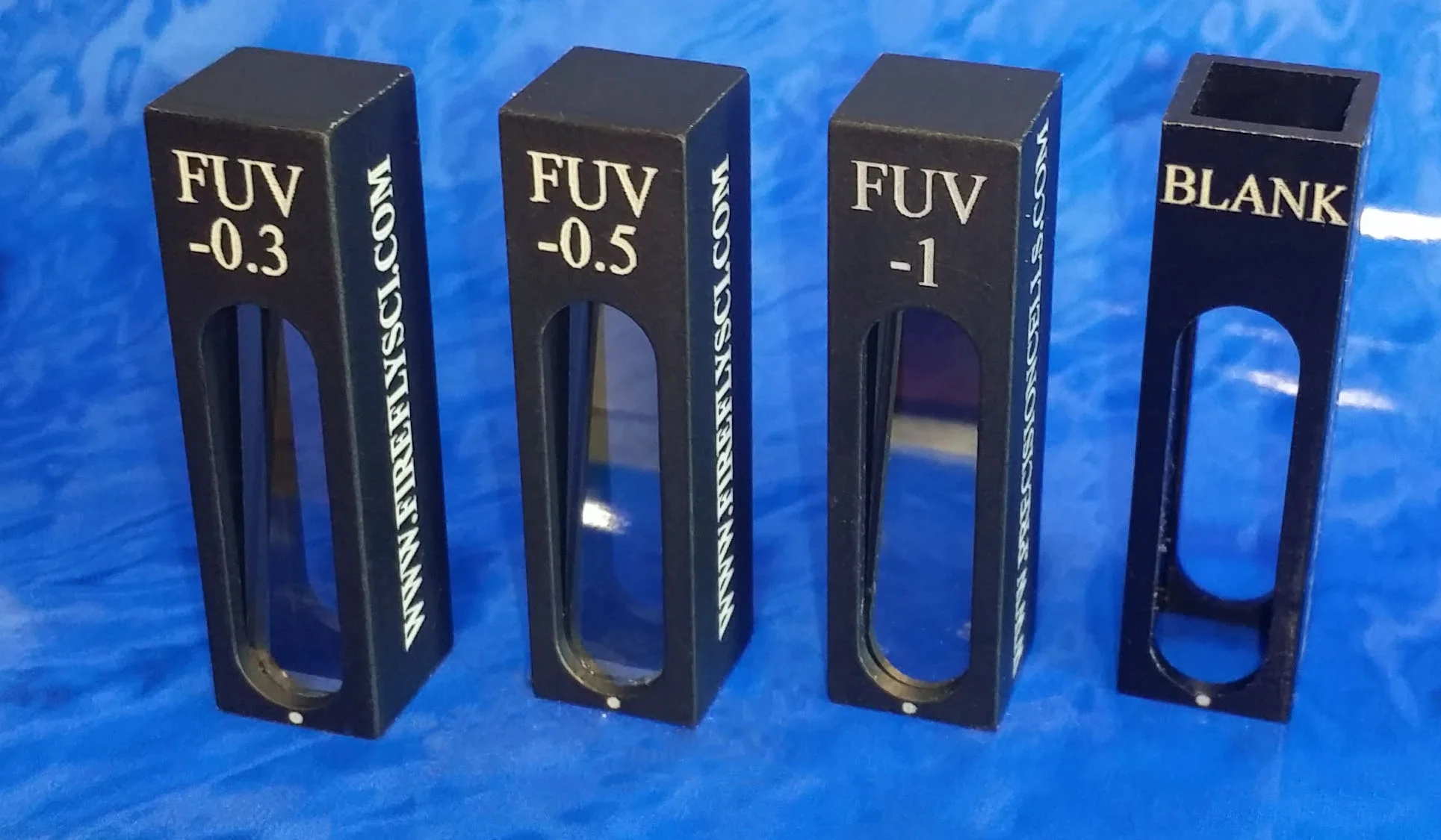Guide to Disposable Cuvettes
/Cuvettes come in many different materials and sizes. The most common material is UV Quartz which has superior transmission in the UV and VIS range. But for researchers who hate to clean cuvettes, there are some amazing disposable cuvettes available.
Now when most people think of disposable cuvettes they think low quality junky cuvettes. This may have been true in the past, but as technology has gotten better so has the performance of plastic cuvettes.
In the past there were very limited materials to choose from. The only ones available were polystyrene and PMMA. These materials are still in use today and for VIS work they are great. They offer a transmission range of about 340 – 900 nm which is ok but not super awesome. However, for UV work there were no disposable options available.
As always, we try to meet all our customers’ needs. Since we found out that there was a need for a UV disposable cuvette, we went out to find one. We are happy to say that we were successful and we offer an amazing UV plastic material now.
The UV plastic has a range from 230 – 900 nm making these a perfect solution for people who are doing experiments with DNA/RNA concentrations. A problem that happened at one university was that the same sub-micro cuvettes were being used by multiple people. When they went to run their tests the results were unreliable because the people who had used the cuvettes before did not do a proper job of cleaning them. Using a box of our micro UV disposable cuvettes solves this problem.
We have a few different cuvette models that have this material available. You can find both spectrophotometer cuvettes and fluorometer cuvettes. They are all basic 10 mm cuvettes with different capacities. We have the following capacities available in the UV plastic material:
- 3.5 mL
- 1.5 mL
- 70 uL
As far as chemical compatibility goes, you’re not going to beat a quartz material with a plastic material. We’ve borrowed the chart below from BrandTech to show the different plastic materials and what you can and should not use in them.
| Chemical | Polystyrene | PMMA | UV Plastic |
|---|---|---|---|
| Acetic acid (96%) | Poor | Poor | Excellent |
| Acetone | Poor | Poor | Excellent |
| Acetonitrile | Poor | Poor | Excellent |
| Benzene | Poor | Poor | Poor |
| Butanone (methyl ethyl ketone) | Poor | Poor | Excellent |
| Carbon Tetrachloride | Poor | Poor | Poor |
| Chloroform | Poor | Poor | Poor |
| Diethy Ether | Poor | Poor | Poor |
| Dimethyl Sulfoxide | Poor | Poor | Excellent |
| Ethanol | Poor | Poor | Excellent |
| Formaldehye (40%)1 | Poor | Poor | Excellent |
| Heptane | Poor | Poor | Poor |
| Hexane | Poor | Excellent | Poor |
| Hydrochloric Acid (32%) | Poor | Poor | Excellent |
| Isopropanol | Poor | Poor | Excellent |
| n-Pantane | Poor | Poor | Poor |
| Oleic Acid | Poor | Poor | Poor |
| Perchloric Acid (10%) | Poor | Poor | Excellent |
| Petroleum Ether | Poor | Poor | Poor |
| Phenol | Poor | Poor | Excellent |
| Sodium Hydroxide | Excellent | Poor | Excellent |
| Sulfuric Acid | Poor | Poor | Excellent |
| Trichloroacetic Acid | Poor | Poor | Excellent |
| Trichloroethylene | Poor | Poor | Poor |
| Toluene | Poor | Poor | Poor |
If you work in a lab where you know the glassware is properly maintained and cleaned, then by all means go with the UV Quartz material. UV Quartz is superior in both transmission and chemical compatibility. But for labs that are not as scrupulous with their cleaning procedures then definitely go with the UV disposable cuvettes.
Another great thing about the plastic cuvettes is that they come in boxes of 100. The prices are very reasonable so you can be paying as little as $0.75 per cell for a UV grade plastic cell, which is awesome.
If you have any questions about disposable cuvettes or need help selecting a cuvette for your experiment, please send us an e-mail at info@fireflysci.com.
Here’s to Your Success!
The FireflySci Team
![firefly_logo_FINAL [Black].jpg](https://images.squarespace-cdn.com/content/v1/5411d5c0e4b02e1c8b27565a/1434491508803-XB4OF7YDY46Z72L5U5AP/firefly_logo_FINAL+%5BBlack%5D.jpg)










